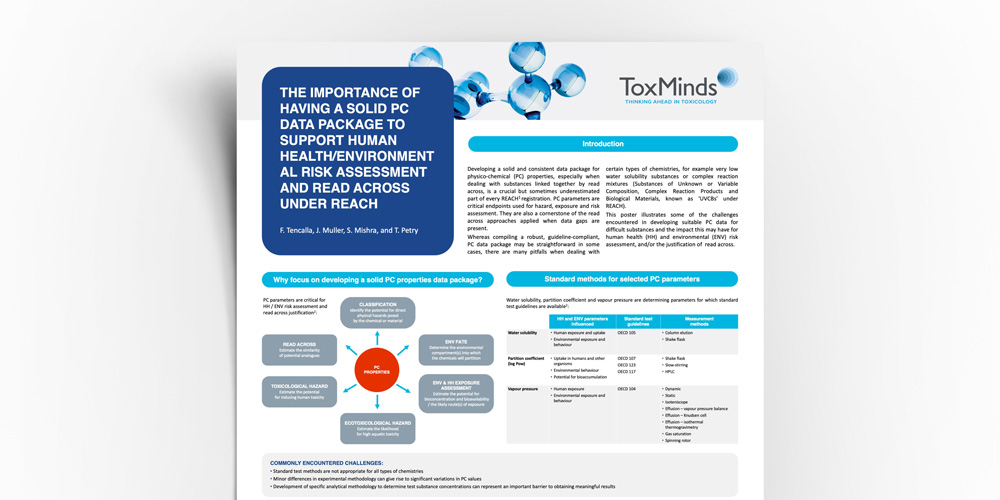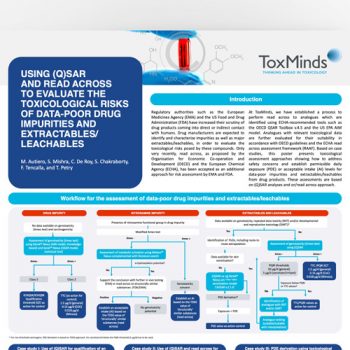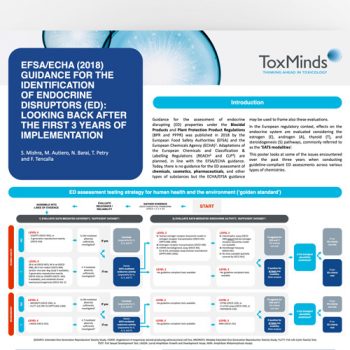The importance of having a solid PC data package to support human health/environmental risk assessment and read across under REACH

Developing a solid and consistent data package for physico-chemical (PC) properties, especially when dealing with substances linked together by read across, is a crucial but sometimes underestimated part of every REACH1 registration. PC parameters are critical endpoints used for hazard, exposure and risk assessment. They are also a cornerstone of the read across approaches applied when data gaps are present.
Whereas compiling a robust, guideline-compliant, PC data package may be straightforward in some cases, there are many pitfalls when dealing with certain types of chemistries, for example very low water solubility substances or complex reaction mixtures (Substances of Unknown or Variable Composition, Complex Reaction Products and Biological Materials, known as ‘UVCBs’ under REACH).
This poster illustrates some of the challenges encountered in developing suitable PC data for difficult substances and the impact this may have for human health (HH) and environmental (ENV) risk assessment, and/or the justification of read across.



